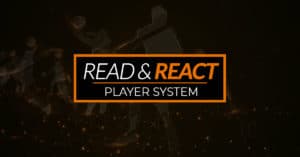Here’s what I mean.
Within Dynamic Defense, there are four basic defensive levels for players to achieve. The first level requires you to be able to guard the ball and keep it out of the middle one-third of the floor.
To achieve the second level, a player must not only guard the ball, but he or she must be able to defend away from the ball. That means being in a position to help a teammate keep the ball from being shot, driven, or passed into the middle one-third.
A Level Three defender must be able to guard the ball, guard away from the ball and to also guard situations. What’s a situation? It’s an offensive action that has forced the defense to switch and rotate. You’ll know you’re about to define a situation when your players say, “Coach, what do we do in this situation?”
The Level Four defender knows the best way for everyone to rotate out of a Level 3 situation, and get back to their original responsibilities, without giving up a basket.
Now, what’s dynamic about those four levels?
- First, it allows me a framework upon which I can hang a concrete curriculum for teaching defense in a step-by-step progression.
- Second, it’s flexible enough to be used to teach any type of defense. As an example, these levels could easily be adapted to a zone defense as well as player-to-player.
- The third dynamic is best explained by a quote from Lord Kelvin: “Until we can measure a thing, we really can’t understand it.” Dynamic Defense gives you the means with which you can measure each player and even entire teams. It especially gives the player the means to measure and rank him or herself.
- The fourth aspect is the best reason for calling it Dynamic Defense. These levels change the dynamics between players and coaches. For myself, this alone makes it worth it – this alone makes it unique and here’s what I mean:
Traditionally, when a coach tells a player to become a better defensive player, the motivation is coming from outside the player, not from within. At the same time, “becoming better” is very broad and general. It’s not immediately measurable.
But what if the coach could measure and rank the player on one of the four levels that I just briefly described? Suddenly, we begin to cut to the natural competitiveness of a player. If you’re ranked at Level 1, what do naturally want to do? You want to be a Level 2 defender. If you’re Level 2, you want to make it to Level 3 and so forth and so on. This changes the dynamics between the coach and the player. When the requirements for these levels are laid out and clearly defined, it’s up to the player to qualify. The motivation now comes from within the player, not from without.







